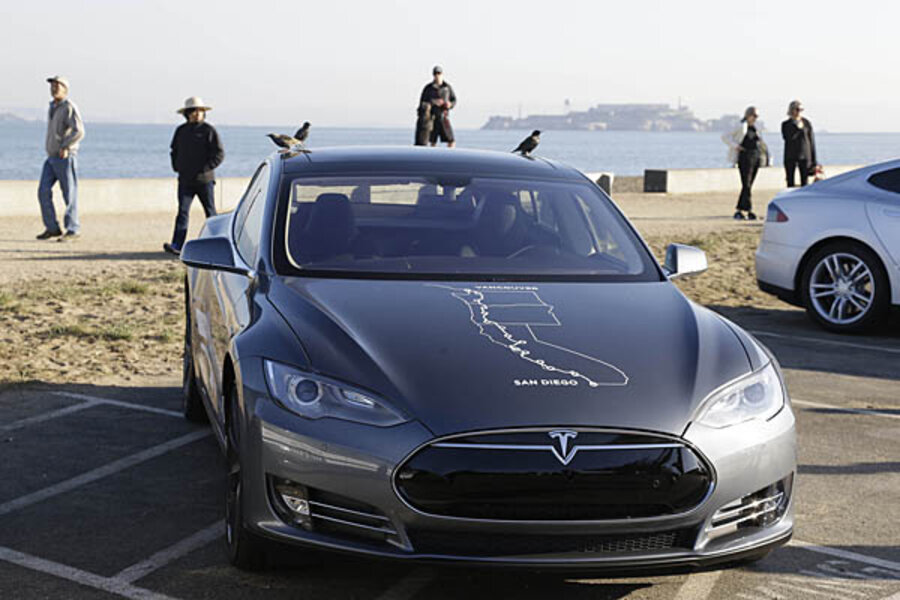Planning a Tesla road trip? Avoid national parks.
Loading...
Thousands of Tesla Model S electric-car owners are now likely planning their summer road trips, enabled by a fast-growing network of Supercharger DC fast-charging stations.
But it turns out that at least one popular U.S. scenic attraction may pose a problem: the National Park System.
The Model S luxury sport sedan is the first all-electric vehicle that can make normal road trips, as reports from the East and West Coasts have proven. Those early trips, however, largely kept to the major Interstate corridors that are served by Tesla Superchargers.
Our great national parks have been destination points for automobile travel for more than 100 years. Yellowstone and Yosemite are major destinations for every American family, along with dozens of other such national ecological treasures.
The problem is that Tesla's present plan for its Supercharger network does not appear to recognize that while most of our national parks are now reachable with a long-range electric car, these parks are too far removed from the powerful charger systems to make a return journey possible.
Nor are many national parks even equipped with Level 2 charging stations from other sources, meaning that parks appear to be black holes for an increasing number of tourists in electric cars.
This issue came into sharp focus for me over the last few weeks: I knew that Yosemite National Park has a single Level 2 public charging point, and I called the Park offices before leaving home to make sure it was operational.
Assured that I would be able to recharge my Model S so to give it enough range to make the 170-mile return trip to our home in Sacramento, California, we embarked on our annual Yosemite Park pilgrimage.
On the outbound drive to the Park Lodge where we had reservations, we faced a strong headwind and a considerable climb into the higher elevations. It's a trip of roughly 170 miles, but on arrival, we had only 54 miles of range left from the 271 miles we'd started with.
That evening, I moved our car to the single Level 2 charging station and left it there plugged in. Next morning, I strolled onto the balcony of our room to see a disturbing vista: Another Tesla Model S had arrived and was parked in our same Lodge lot!
With only two Teslas in the Park at the same time, fortunately we were able to coordinate our charging times in person.
But imagine this summer, when there may be several independent visitors with longer-range electric cars (Tesla, or a Toyota RAV4 EV, perhaps even a BMW i3 with range extender). The potential for a charging Black Hole is obvious.
National Park officials, I learned after some extensive conversations in the Park, are not aware of any procedures or plans for coordinating, handling, or serving multiple guests who need to charge battery-electric vehicles.
I noted that Yosemite already provides free "hybrid" bus service throughout the Park, to discourage the use of internal-combustion vehicles and cut traffic within its boundaries.
So it seems particularly unfortunate that our national environmental treasures--beautiful places that benefit from visitors arriving in quiet, emission-free electric cars--seem to have no program in place to encourage or even support such visits at any scale.
Clearly National Park officials should work to develop a service plan for further promoting and supporting visitors who arrive in the cleanest of all possible transportation modes.
And I hope for all of our sakes that they do it quickly.







